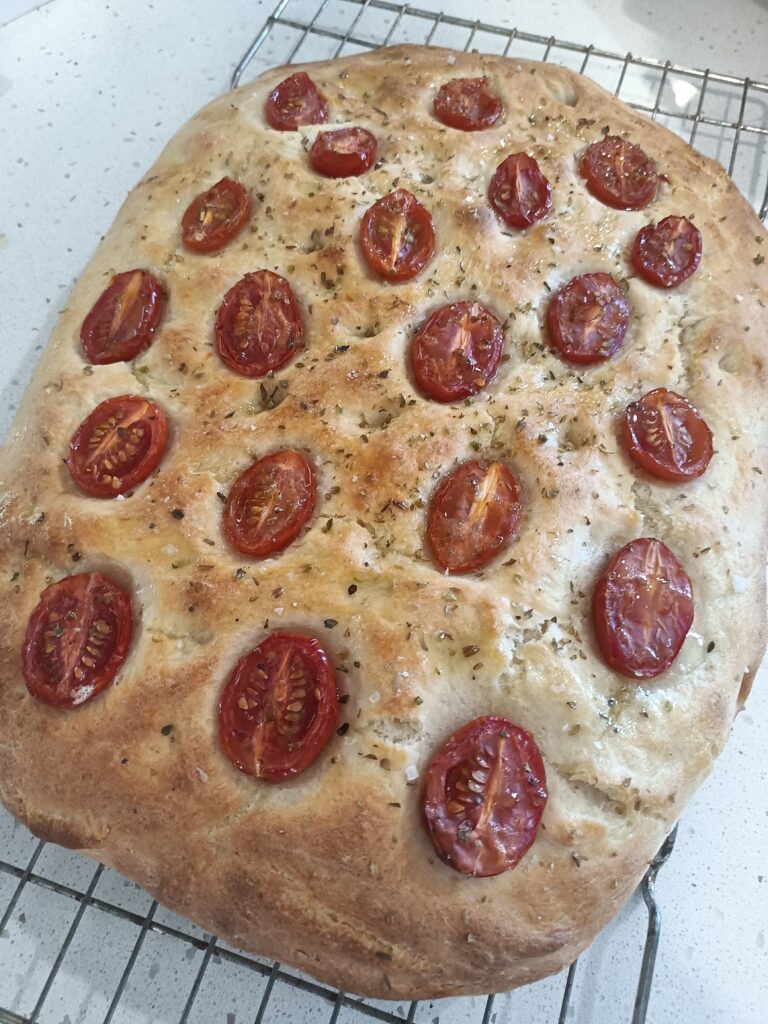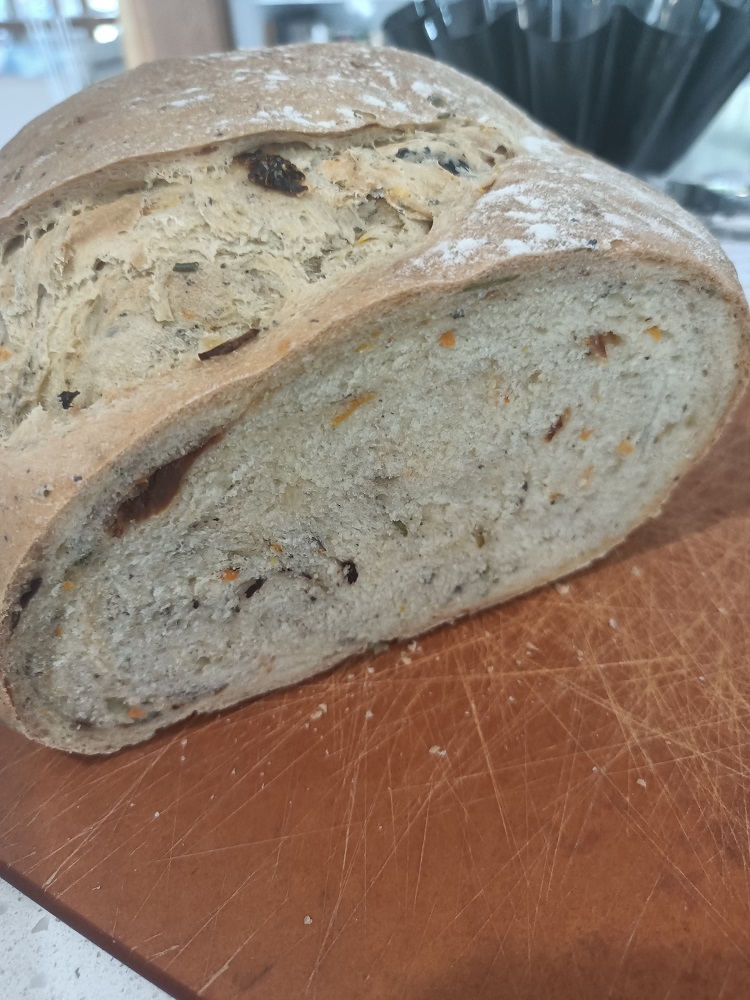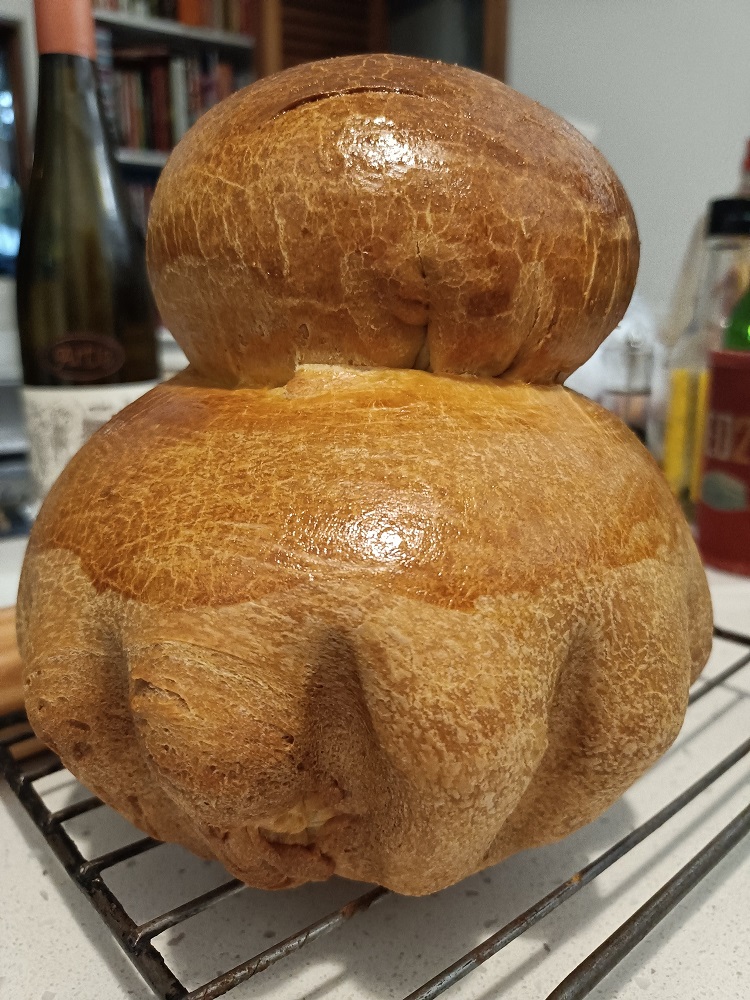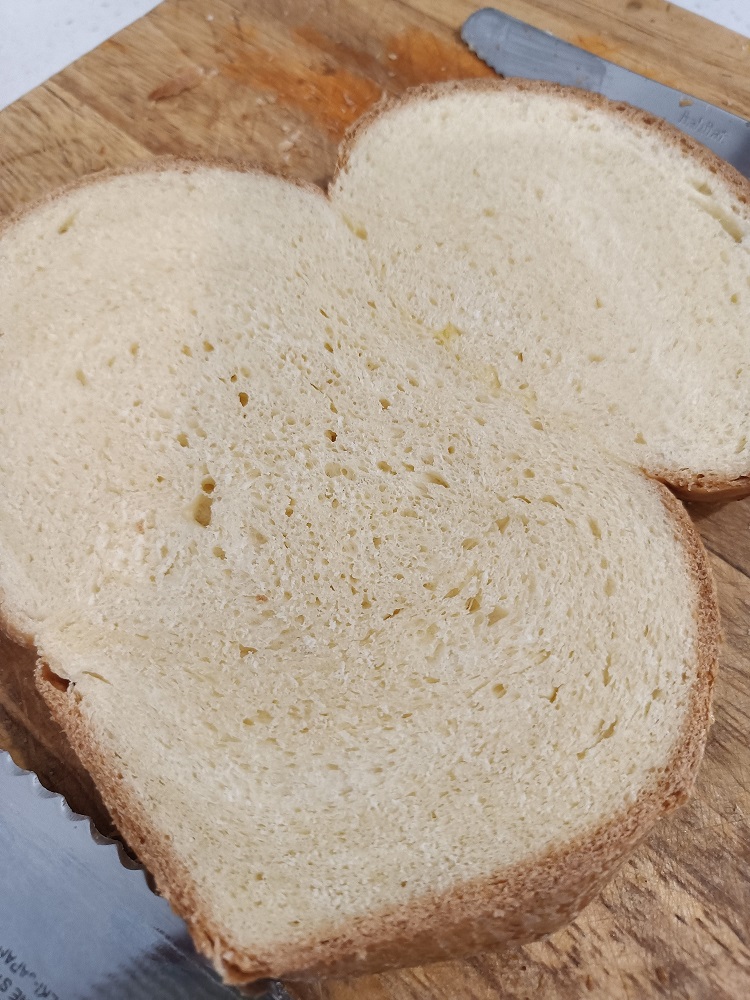On Wednesday we went to lunch with some friends who asked us to bring bread. We had an early start anyway, so I knocked up a batch of milk rolls. I was thinking that at least some would come home with me but apparently that was not to be the case … Fortunately, on Wednesday night, we watched SBS Snacks (otherwise known by its more boring name, SBS Food) and saw Colloca put together a focaccia pugliese. I was actually going to make a different bread, but Andy liked the look of this AND we had some potatoes hanging about in the cupboard.
Yes, potatoes. Focaccia Pugliese (as in, ‘focaccia from Puglia’ or ‘Puglian focaccia’ – from the region of Puglia, the heel of Italy’s boot) is distinguished from other focaccias by the inclusion of mashed potato in the dough. If you’ve done some bread making, you’ll know that including potato is a good way of adding moisture into the bread, and while the dough is softer, the crumb is slightly tighter. The topping is (apparently) traditionally tomatoes and oregano, which is what I stuck with – however, we discussed this and felt that sundried tomatoes & some red onion (and maybe some olives) would also work admirably. To be honest – just whack what you want on top unless you’re serving to bread purists or Italian food purists.
The mashed potato step does add time to the process so actually what I’d recommend is that next time you’re making mash, boil up loads of potato and separate out 300g of mash before you add your butter/cream/milk to the remainder. Or, in my case, boil up potatoes specifically, separate out your 300g of mash and then make the remainder into lunch for the starving child roving the house …
Pro tips … don’t be shy with the salt (either in the dough or on top) and definitely don’t be shy with the oregano. Also – I used my standard bread flour (I actually had 00 flour but read that part of the recipe too late and also wasn’t sure I had 500g). And, as the potato does mean a tighter crumb don’t be expecting a focaccia full of big airy holes!
Colloca’s original focaccia pugliese recipe is over on SBS.
Focaccia Pugliese
Ingredients
- 500g flour (recipe calls for 00, I used Laucke’s Wallaby)
- 7g dried yeast
- 2 tbsp extra virgin olive oil
- 150mL warm milk (warm in microwave)
- 100mL tepid water
- 300g mashed potatoes – cooled (this is potatoes, mashed, not potatoes mashed & then loaded with cream/butter/milk … for best results use a potato ricer)
- salt, cherry tomatoes, extra olive oil and dried oregano
Directions
- Put all ingredient (bar cherry toms, extra oil & oregano) in a bowl and mix together well before turning out on a bench and kneading. The dough didn’t behave super well, so I gave it a brief knead, before putting back in the bowl for a 10 minute rest and then kneading again. A little rest always seems to improve things.
- Once dough is smooth, return to bowl, cover and let rise for maybe 2 hours or until roughly doubled in size.
- Pre-heat oven to 180C fan. Line a baking tray with edges (mine is about 20cm x 40cm) with baking paper.
- Oil your hands and then tip the dough from the bowl onto the baking tray, stretching the dough out to roughly 1cm thickness all round.
- Use your fingers to create the distinctive focaccia divots in the dough, sprinkle with the oregano (generously!), arrange the halved cherry toms & then drizzle with a little extra oil.
- Bake for about 20 minutes, until golden and puffed. (If you’re into these things, internal bread temperature you’re looking at 90+C – on this occasion mine was about 95C).




